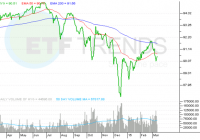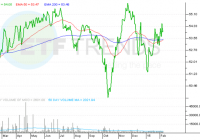Fund Liquidations: Salient, Ramius And Raylor
By DailyAlts Staff In this edition of Fund Liquidations, notes on four funds that have filed for liquidation: Salient Alternative Beta Fund In a September 2 filing with the Securities and Exchange Commission (“SEC”), the Salient MF Trust said its Board of Trustees had approved a plan to liquidate the Salient Alternative Beta Fund (MUTF: SABFX ). The liquidation date was slated for just a day later, on September 3, and the fund immediately stopped accepting investments from new shareholders. According to Bloomberg , September 14 was the fund’s last day of trading, and its shares closed at a final price of $6.96. The fund debuted in March 2013 at a price of $10.14. Ramius Hedged Alpha Fund The Ramius Hedged Alpha Fund (MUTF: RDRAX ) was liquidated on September 4. Its Board of Trustees made the decision to liquidate in July and notified the SEC of its intentions on July 31. According to Bloomberg , the fund debuted on September 17, 2010 at a share price of $10.02, and closed September 4, 2015 at $8.78, down 11.4% since inception. Year-to-date, through its final day of trading, the Ramius Hedged Alpha Fund returned -11.9%. Ramius Strategic Volatility Fund Ramius also liquidated the Ramius Strategic Volatility Fund (MUTF: RVOAX ) on September 4, after filing its intent to do so with the SEC on July 31. The fund, which debuted in October 2012 at $10 per share, finished its final day of trading at $2.64, down a staggering 73.6% since its inception, according to Bloomberg . The fund closed out 2014 at $3.09, meaning its year-to-date returns through its closing were -14.6%. Raylor Managed Futures Strategy Fund According to a September 9 SEC filing , the Board of Trustees of the Northern Lights Fund Trust III has decided to cease operations of the Raylor Managed Futures Strategy Fund (MUTF: TMFAX ). Effective immediately, management stopped selling shares to new investors and warned its existing shareholders that it would begin to deviate from the fund’s investment objective, in pursuit to a liquidation of the fund planned for October 9. Shares of the Raylor Managed Futures Strategy Fund returned -8.76% in the first eight months of 2015, according to Morningstar, ranking it in the bottom 8% of funds in its category. Over the six months concluding August 31, the fund returned an even-worse -11.55%. Share this article with a colleague

